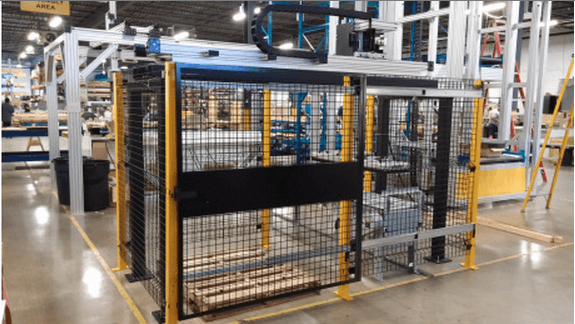News
Palletizer machines have become an essential part of automation, replacing human error and injury in manufacturing with efficiency and speed.

Palletizer machines have become an essential part of automation, replacing human error and injury in manufacturing with efficiency and speed. In addition to such benefits, palletizers can handle environments that would otherwise be injurious to workers. Instead of requiring the hire of more laborers to do this work, many companies have adopted palletizers into their workplace environments in order to get the job done more quickly, effectively and safely.
While most manufacturing companies have made significant advances in automating the front end of their production process, many still continue to neglect updating their packaging and palletizing systems. For any company that manufactures a product, especially large or heavy items placed on a shipping pallet, automated palletizing equipment can make or break the process, whether it comes in the form of a robotic or conventional palletizer.
Conventional palletizers typically use a layer technique that forms the pack pattern of cases, squeezes them into shape and deposits them one layer at a time onto the pallet. This palletizer can be broken down into two categories – a low-level or high-level palletizer. High-level conventional palletizers operate in a very similar manner to low-level ones, except they allow palletizers to be formed into layers at much higher speeds by keeping the case layers stationary and raising/lowering the pallet instead.
Robotic palletizing systems are reliable, flexible and increase productivity with only a small equipment footprint and therefore have become a more ideal solution for a wider range of packing scenarios. Typically there are two styles of robotics used; an articulated arm robot or a Cartesian gantry style Linear robot. Robotic systems are also extremely versatile, and many offer a fully automated end of arm tool (EOAT) attachment to handle multiple products. Further, robotic palletizers can work in refrigerated and freezer environments, while also handling heavy loads and repetitive tasks. In comparison with conventional layer palletizers, they require less space, leave less room for error and are overall better equipped to handle multiple tasks.
To achieve the improvements automation systems produce, it is important to select the best combination of robot style, gripper and auxiliary equipment to match the production need. An automation solutions integrator can provide the right solution for any palletizing application.

Macron Dynamics offers a Cartesian style MGS-UC2 linear robot kit that can be integrated into palletizing systems. The Macron MGS-UC2 gantry product is a robust and durable 2-axis system with broad payload capacity. Belt driven in each axis, the unit is fast and repeatable. This ready-made kit, in pre-configured standard travel lengths, includes integrated cable management, low profile T-slot sensors and MPG gearboxes ready for any motor mounting. For those larger footprints and reach situations a user can easily add an additional axis to meet any challenge.
An example of a Macron MGS-UC2 linear robot can be found in action on an economical Palletizer system manufactured by KwikPall, www.kwikpall.com
Macron Dynamics is proud to give back to the community by donating one of our gantry systems for educational use...
Meet Macron Dynamics new Southeastern Regional Manager, David Heiberger.
Meet Macron Dynamics new Director of Operations, Samuel J. Riccio, who is an industrial automation industry expert for semiconductors and...